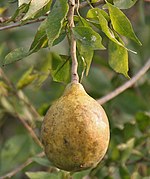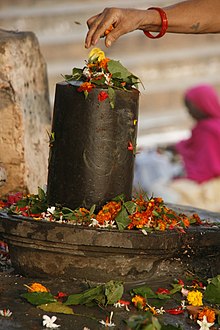Vanakam and blessed day to all,
Limited Vilvam/Bael/Bilva plants for sale.
+60129259495
Pick up in Klang Valley. Delivery in Klang Valley can be arranged. There will be a transportation cost for it.
+60129259495
As a human being , in your life you need to plants this sacred plant in the temples. It is a great blessings to you and your family not only in this birth , it goes to at least 7 generation.
+60129259495
So buy and plant it in your hand in temples.
+60129259495
So WhatsApp/Sms asap to +60129259495 to book and confirm your order.
Vernacular names
The tree is called "belpatthar ka paid" in Hindi "belada mara" and the religious tree "bilva" or "bilpatre" in Kannada, "vilvam" (வில்வமரம்) in Tamil, "beli" ( බෙලි )in Sinhala.. The fruits are known as belada hannu (edible variety), bilva (sacred variety) in Kannada, "bela" in Oriya, "bael" (বেল) in Bengali and bilva and maredu (మారేడు) in Telugu. It is a native of India and is found widely in Asia, in countries like Burma, Thailand, Sri Lanka, etc. It is called as Sivadruma by the Hindus and is considered as a sacred herb. It is widely found in Indian Siva temples since the herb is considered sacred to Shiva, the lord of health. The leaves of the plant are being offered to Gods as part of prayers.[4][5] The fruits can be eaten either freshly from trees or after drying them.
All parts of the herb (leaves, fruits, roots) are used for medicinal purposes. The herb is widely helpful to kapha and vata dosas. It is not suited to pita dosa.
+60129259495
Botanical information
Bael is the only member of the monotypic genus Aegle.[3] It is a mid-sized, slender, aromatic, armed, gum-bearing tree growing up to 18 meters tall. It has a leaf with three leaflets.
Ecology
Bael occurs in dry forests on hills and plains of northern, central, eastern and southern India, Pakistan, southern Nepal, Sri Lanka, Myanmar, Bangladesh, Vietnam, Laos,Cambodia and Thailand. It is cultivated throughout India, as well as in Sri Lanka, the northern Malay Peninsula, Java, the Philippines, and Fiji. It has a reputation in India for being able to grow in places that other trees cannot. It copes with a wide range of soil conditions (pH range 5-10), is tolerant of waterlogging and has an unusually wide temperature tolerance (from -7 °C to 48 °C). It requires a pronounced dry season to give fruit.
- The Lime Butterfly: Papilio demoleus
- The Common Mormon: Papilio polytes
+60129259495
Fruit
The bael fruit has a smooth, woody shell with a green, gray, or yellow peel. It takes about 11 months to ripen on the tree and can reach the size of a large grapefruit or pomelo, and some are even larger. The shell is so hard it must be cracked with a hammer or machete. The fibrous yellow pulp is very aromatic. It has been described as tasting of marmalade and smelling of roses. Boning (2006) indicates that the flavor is "sweet, aromatic and pleasant, although tangy and slightly astringent in some varieties. It resembles a marmalade made, in part, with citrus and, in part, with tamarind."[6]Numerous hairy seeds are encapsulated in a slimy mucilage.
+60129259495
Uses
The fruit is eaten fresh or dried. If fresh, the juice is strained and sweetened to make a drink similar to lemonade. It can be made into sharbat(Hindi/Urdu) or Bela pana (Oriya: ବେଲ ପଣା) or bel pana (Bengali: বেল পানা), a refreshing drink made of the pulp with water, sugar, and lime juice, mixed, left to stand a few hours, strained, and put on ice. One large bael fruit may yield five or six liters of sharbat.
If the fruit is to be dried, it is usually sliced and sun-dried. The hard leathery slices are then immersed in water.
The Tamil Siddhars call the plant koovilam (கூவிளம்) and use the fragrant leaves for medicinal purposes, including dyspepsia andsinusitis.[citation needed] A confection called ilakam (இளகம்) is made of the fruit and used to treat tuberculosis and loss of appetite.[7]
In the system of Ayurveda this drug finds several and frequent therapeutic uses in different forms and recipes. They are prescribed in a number of diseases such as gastro intestinal diseases, piles, oedema, jaundice, vomiting, obesity, pediatric disorders, gynecological disorders, urinary complaints and as a rejuvenative. Besides the wide medicinal utility the plant and its certain parts (leaves and fruits) are of religious importance since the tree is regarded as one of the sacred trees of Indian heritage.[8]
Aegeline (N-[2-hydroxy-2(4-methoxyphenyl) ethyl]-3-phenyl-2-propenamide) is a known constituent of the bael leaf and consumed as a dietary supplement for a variety of purposes.
+60129259495
Religious significance-The Holy Bael
The fruit is also used in religious rituals.
In Hinduism the tree is sacred. It is used in the worship of Shiva, who is said to favour the leaves. The tri-foliate form of leaves symbolize the trident that Shiva holds in his right hand. The fruits were used in place of coconuts before large-scale rail transportation became available. The fruit is said to resemble a skull with a white, bone-like outer shell and a soft inner part, and is sometimes called seer phael(head-fruit). However, it is quite likely that, the term 'Seer Phal' has coined from the Sanskrit term 'ShreePhal, which again is a common name for this fruit. Many Hindus have bael trees in their gardens.
In the traditional Newari culture of Nepal, the bael tree is part of a fertility ritual for girls known as the Bel baha. Girls are "married" to the bael fruit and as long as the fruit is kept safe and never cracks the girl can never become widowed, even if her human husband dies. This was seen to be protection against the social disdain suffered by widows in the Newari community.
+60129259495
Medicinal uses
Research has found the essential oil of the Bael tree to be effective against 21 types of bacteria.[13] It is prescribed for smooth bowel movement to patients suffering from constipation and other gastrointestinal problems.
Research also indicates that unripe Bael fruit is effective in combating giardia and rotavirus. While unripe Bael fruit did not show antimicrobial properties, it did inhibit bacteria adherence to and invasion of the gut (i.e. the ability to infect the gut).
Please share with your friends.
Om Namasivaya
Sivajnani Nagappan
+60129259495





No comments:
Post a Comment